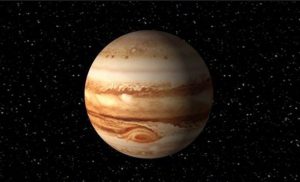
Juno space probe closest to Jupiter

NASA’s probe Juno, moving at 130,000 mph (208,000 km/h), has made its first close approach to the planet Jupiter, 2600miles (4200km) above, since going into orbit in July. Juno had all is instruments and camera switched on and is ready for the encounter. Nasa expects to release some high resolution images from the approach in the next few days. The closest approach was set for 12:51GMT.
Juno’s aim is to probe the secrets of the Solar System by explaining the origin and evolution of its biggest planet. We should finally discover if Jupiter has solid core or if its gas merely compresses to an ever denser state all the way to the centre. We will also find out on the famous Great Red Spot – the colossal storm that has raged on Jupiter for hundreds of years. Controllers will send the probe on another 53-day orbit before firing the probe’s engine once again on 19th October to tighten the circuit to just 14 days.
On February 2018, the spacecraft will be commanded to make a destructive dive into Jupiter’s atmosphere.
Jupiter is 11 times wider than Earth and 300 times more massive and takes 12 Earth years to orbit the Sun: a day is 10 hours long. Jupiter has mostly hydrogen and helium and under pressure Hydrogen becomes an electrically conducting fluid, and the metallic hydrogen’ is likely the source of the magnetic field. Most of the visible cloud tops contain ammonia and Hydrogen sulphide and its stripes are created by strong east-west wind.. The great red spot is a giant storm vortex twice as wide as Earth.
